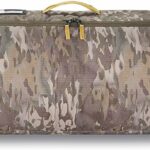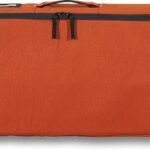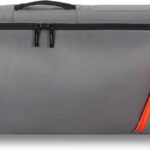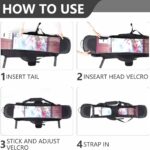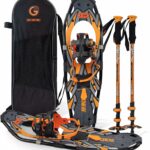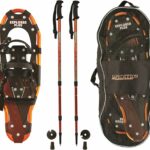Venturing out into the cold on your trusty snowmobile is always a thrilling experience, but ensuring you’re prepared with the right kind of antifreeze can really take the weight off your shoulders. This article is for you if you find yourself questioning which type of antifreeze to use in a snowmobile. By reading on, you can learn not only about different types of antifreeze available, but also understand which one will give your snowmobile the best protection against freezing conditions. Cut out the guesswork and equip yourself with the knowledge to keep your snowmobile running smoothly no matter how low the temperature dips.
Understanding Antifreeze Importance in Snowmobiles
Antifreeze is a critical fluid in any vehicle, and for snowmobiles, it’s no different. Understanding the importance of antifreeze and how it works is crucial for any snowmobile owner.
Role of antifreeze in an engine
Think of antifreeze as a guardian of your engine. It’s a liquid that circulates through your engine to absorb and transfer heat. This crucial process prevents overheating in the summer and freezing in the winter. Antifreeze also contains additives that prevent corrosion and rust, helping to extend the lifespan of your engine.
Why antifreeze is important for snowmobiles
Snowmobiles, while loved for their ability to thrive in cold conditions, are at risk of freezing without antifreeze. The coolant not only prevents freeze-up but also dissipates the heat produced by the engine during operation, ensuring a balanced temperature. This balance is pivotal as it guarantees the engine’s optimal functioning while averting potential damage from overheating.
The Different Types of Antifreeze
Just as there are numerous types of vehicles, there are also distinct forms of antifreeze. Despite their color variations, each type comes with a unique set of characteristics to cater to different engine demands.
Inorganic Additive Technology (IAT)
IAT antifreezes were the first to hit the market. They contain inorganic compounds like silicates and phosphates that guard against corrosion exceptionally well. Nonetheless, IAT coolants require replacement more frequently than their counterparts due to the faster depletion of their additives.
Organic Acid Technology (OAT)
OAT antifreeze stands out for its long-lasting life, thanks to organic acids that are slow to deplete. However, it’s essential to ensure it’s compatible with your snowmobile’s engine since OAT can be corrosive to specific metals.
Hybrid Organic Acid Technology (HOAT)
Taking the best from both worlds, HOAT coolants feature organic acids supplemented with inorganic additives. This hybrid option delivers excellent protection against corrosion and rust for a broad array of metals, making it a flexible choice.
Phosphated Organic Acid Technology (POAT)
POAT antifreeze is a special type, particularly suitable for high-heat conditions. These incorporate phosphates, hence the name, and organic acids to provide excellent protection from oxidation and cavitation.
Silicate free Organic Acid Technology (Si-OAT)
Si-OAT antifreeze builds upon the OAT formula by removing silicates. This results in longer protection periods and improved compatibility with different engine materials.
Antifreeze Specifications for Snowmobiles
There are no “one-size-fits-all” criteria when it comes to choosing antifreeze for your snowmobile. The specifications depend on several factors, including the manufacturer’s recommendations and the engine type.
Manufacturer’s recommendation
This should be your primary reference point when deciding on an antifreeze. Manufacturers often specify the type of coolant best suited for the snowmobile in the owner’s manual. This information prevents potential damages that can arise from incompatibility.
Appropriate antifreeze for the engine type
The type of engine your snowmobile has also plays a role in the choice of antifreeze. For instance, an aluminum engine might require a specific type of antifreeze compared to a cast iron engine. The rule of thumb is to select a coolant that matches your engine’s demands.
Different antifreeze for different snowmobile brands
Every snowmobile brand has unique engine specifications. As such, the antifreeze best for a Polaris may not be suitable for a Yamaha. Always refer to the owner’s manual or consult with a professional to ensure you choose correctly.
The Best Color of Antifreeze for Snowmobiles
Understanding the color codes of antifreeze
Antifreeze often comes in a rainbow of hues, but these colors are not just for aesthetics. They characterize different types of antifreeze. Green traditionally denotes IAT, orange for OAT, and yellow for HOAT. However, it’s essential to note that color codes can vary among manufacturers.
Selecting the right color for your snowmobile
Choosing antifreeze based on its color alone can lead to some pitfalls. It’s always wise to go beyond the color and scrutinize the labels or ask a professional before deciding.
Does color really matter?
While colors serve as a quick reference, they are less significant than the antifreeze specifications. The performance of the antifreeze in your snowmobile’s engine vastly outweighs the color factor.
Checking the Antifreeze Coolant Level in Snowmobiles
How to check the coolant level
Checking the coolant level is pretty straightforward. It usually involves finding the coolant reservoir, examining the minimum and maximum level markings, and ensuring the coolant is at the correct level.
Signs of low antifreeze levels
Keep an eye out for cues such as engine overheating, low coolant warning light, or coolant leakage. These are telltale signs that your antifreeze level might be dangerously low.
How often should you check?
Ideally, checking the coolant level should be part of your routine maintenance plan. A monthly check-up is a good practice that helps you maintain optimal performance and catch any possible issues early.
Changing the Antifreeze in Snowmobiles
When to change the coolant
Many factors determine when to change the coolant. These could be the manufacturer’s recommendation, a change in the coolant color, or the presence of floating particles. It’s a good idea to change the antifreeze at least once every two years.
Step-by-step guide to change the antifreeze
Changing antifreeze involves draining the old coolant, flushing the system, and then filling it with new antifreeze. Always remember to dispose of the old coolant responsibly.
The harm of not changing the coolant regularly
Neglecting to change the coolant can lead to rust and corrosion in the cooling system, causing decreased performance and potential engine damage.
The Best Antifreeze Brands for Snowmobiles
Top antifreeze brands recommended by experts
Expert opinions vary, but some top brands like Engine Ice, Maxima, and Polaris often come highly recommended.
Highly rated antifreeze brands by snowmobile owners
Snowmobile owners have their preferences too. Brands like Castrol, Prestone, and Zerex frequently receive high ratings for their performance in various forums.
Brands to avoid
It’s difficult to point out brands to steer clear from definitively. However, it’s necessary to avoid cheap alternatives that offer no clear information about their specifications and compatibility.
The Risks of Using Incorrect Antifreeze
Engine damage from incorrect antifreeze
Using the incorrect antifreeze can cause significant harm to your snowmobile’s engine. This can manifest as overheating issues, leaks, and in worst-case scenarios, complete engine failure.
Compromised performance due to incorrect coolant
Incorrect antifreeze can impair the engine’s health, affecting its performance. You might experience less power, poor fuel efficiency, or consistent overheating.
Shortened snowmobile life from incorrect antifreeze
Inferior or mismatched antifreeze can lead to premature wear and tear of the engine. This will invariably shorten the overall lifespan of your snowmobile.
Environmentally Friendly Antifreeze Options
Biodegradable antifreeze brands
Biodegradable antifreeze options, such as Sierra or Safe Brands, offer an eco-friendly alternative. These brands are typically non-toxic and safer for use around kids and pets.
Benefits of using eco-friendly antifreeze
Besides being less toxic, they also present less environmental contamination when it comes to disposal. However, it’s still essential to dispose improperly.
Disadvantages of eco-friendly options
On the flip side, some users report that eco-friendly antifreeze doesn’t provide the same level of protection as conventional types. Again, ensure compatibility with your snowmobile’s engine to avoid potential issues.
Frequently Asked Questions about Antifreeze in Snowmobiles
Common queries from novice snowmobile owners
Newbies typically ask questions like “What’s the best brand of antifreeze?” or “How do I check my coolant level?” It’s always beneficial to seek and learn from other’s experiences or experts.
In-depth answers from the experts
Experts provide exhaustive responses to these queries, often grounded in technical data. Their advice often touches on the importance of following manufacturer guidelines, understanding the coolant “life,” and carrying out regular maintenance checks.
Tips from seasoned snowmobile owners
Seasoned owners share practical tips such as maintaining a log of your service checks, always carrying spare antifreeze, and regularly inspecting the coolant bottle for leaks or cracks. These insights can be quite valuable to both novice and experienced snowmobile owners alike.
- What Snowboard Bindings Should I Get? - January 23, 2024
- What Size Screws For Snowboard Bindings? - January 23, 2024
- How To Snowmobile On Water? - January 23, 2024

